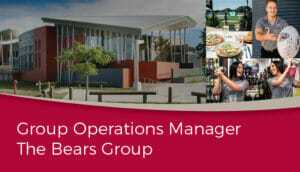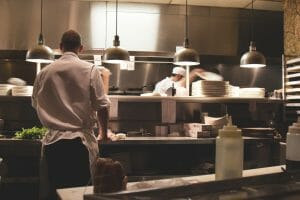 The recent Queensland Government announcement that clubs will be able to operate up to 300 machines in a single venue, up to 450 machines in two or more venues and 500 machines in three or more venues recognises the State’s need to grow its club infrastructure in line with the anticipated economic and population growth.
The recent Queensland Government announcement that clubs will be able to operate up to 300 machines in a single venue, up to 450 machines in two or more venues and 500 machines in three or more venues recognises the State’s need to grow its club infrastructure in line with the anticipated economic and population growth.
The State’s current population of 5.03 million is expected to swell to 7.0 million by 2035 and close to 10 million by 2060.
By current viability measures, this means that the State might support another 60 – 80 new club venues (100-150 machines each) and another 100 hotels (40 and 45 machines each), over the next 20 years. The reality is that additional machines won’t be added to the supply of machines to the market. The cap, at least for the short term, will remain and clubs seeking to establish a second or third branch venue will need to source entitlements from other clubs that don’t need the entitlements that they have.
If the market is allowed to grow as it should and clubs and pubs can access capital to grow, we see the following movements in the club environment in the next 20 years:
 1. Amalgamations and mergers: There will be very few amalgamations and mergers of clubs. The smaller “struggling” clubs that need taking over struggle for good reason. It’s often because they are on short term non-commercial leases with councils, or that they are in poor commercial locations or have issues amongst the membership that prevent a consensus being reached on matters such as amalgamations. The bowling club sector is a prime example. 1. Amalgamations and mergers: There will be very few amalgamations and mergers of clubs. The smaller “struggling” clubs that need taking over struggle for good reason. It’s often because they are on short term non-commercial leases with councils, or that they are in poor commercial locations or have issues amongst the membership that prevent a consensus being reached on matters such as amalgamations. The bowling club sector is a prime example. |
|
 2. Greenfield locations: Larger and successful clubs, possibly only the best 20 – 30 in the State will examine ways to open second and third (and possibly fourth/fifth) locations in growing areas. It’s probable that these new, greenfield locations will be developed in conjunction with a local embryonic sporting or community initiative in the area. 2. Greenfield locations: Larger and successful clubs, possibly only the best 20 – 30 in the State will examine ways to open second and third (and possibly fourth/fifth) locations in growing areas. It’s probable that these new, greenfield locations will be developed in conjunction with a local embryonic sporting or community initiative in the area. |
|
 3. Site development: New greenfield club developments won’t be in poor locations. They’ll be in prime sites, just like the prime clubs developments in the ACT in the past 20 years or so. 3. Site development: New greenfield club developments won’t be in poor locations. They’ll be in prime sites, just like the prime clubs developments in the ACT in the past 20 years or so. |
|
 4. Infrastructure: It’s unlikely that these greenfield developments will be on expensive freehold land owned by the club. It’s more likely that the clubs will be developed in conjunction with the development sector. A start up 150 machine club will cost between $13 million and $15 million to build and fit out. Add freehold land to the equation and the development starts to get far too expensive upfront to be viable. This means we will observe more clubs seeking to rent and fit out sites that come complete with car parking; typically standalone sites near hubs like shopping areas. Most new venues will seek to operate at least 150 machines in the start-up phase. 4. Infrastructure: It’s unlikely that these greenfield developments will be on expensive freehold land owned by the club. It’s more likely that the clubs will be developed in conjunction with the development sector. A start up 150 machine club will cost between $13 million and $15 million to build and fit out. Add freehold land to the equation and the development starts to get far too expensive upfront to be viable. This means we will observe more clubs seeking to rent and fit out sites that come complete with car parking; typically standalone sites near hubs like shopping areas. Most new venues will seek to operate at least 150 machines in the start-up phase. |
|
 5. Industry stakeholders: Major land developers such as Stockland, Lend Lease, Mirvac and PEET will factor in club developments into their planning for new major projects. 5. Industry stakeholders: Major land developers such as Stockland, Lend Lease, Mirvac and PEET will factor in club developments into their planning for new major projects. |
|
 6. Micro-environments: An alternative to the large 150+ machine club is the small, well located “micro-club” that may emerge. Canberra Labor Group’s club in Civic is a prime example of this type of development. The club was established in 2006 in the city centre of Canberra and operates 58 machines, an espresso bar, café, bar and function lounge. 6. Micro-environments: An alternative to the large 150+ machine club is the small, well located “micro-club” that may emerge. Canberra Labor Group’s club in Civic is a prime example of this type of development. The club was established in 2006 in the city centre of Canberra and operates 58 machines, an espresso bar, café, bar and function lounge. |
|
 7. Stumbling blocks: While we speculated above that there’s “room” for another 100 mid-sized clubs in Queensland in the next 20 years, the reality is that other factors will prevent this growth from occurring, such as board preparedness to progress with a development, access to capital funds, access to entitlements and complex regulatory processes. There may only be 20-30 clubs in the State with an appetite to even consider this opportunity. Our view is that we may see a small number of amalgamations combined with 10 to 20 greenfield developments in the next 20 years and it’s likely that joint commercial arrangements with developers are inevitable. 7. Stumbling blocks: While we speculated above that there’s “room” for another 100 mid-sized clubs in Queensland in the next 20 years, the reality is that other factors will prevent this growth from occurring, such as board preparedness to progress with a development, access to capital funds, access to entitlements and complex regulatory processes. There may only be 20-30 clubs in the State with an appetite to even consider this opportunity. Our view is that we may see a small number of amalgamations combined with 10 to 20 greenfield developments in the next 20 years and it’s likely that joint commercial arrangements with developers are inevitable. |
|
 8. Supply and demand: The demand for entitlements will intensify as new opportunities emerge for new club developments. The 5,000 to 7,000 club machine entitlements that are under-utilised (low revenue and therefore generating low or no taxes and not contributing to the club’s surpluses) will be in demand. The real value of entitlements might grow to the trading figures seen in the hotel sector if the government doesn’t increase the pool supply. 8. Supply and demand: The demand for entitlements will intensify as new opportunities emerge for new club developments. The 5,000 to 7,000 club machine entitlements that are under-utilised (low revenue and therefore generating low or no taxes and not contributing to the club’s surpluses) will be in demand. The real value of entitlements might grow to the trading figures seen in the hotel sector if the government doesn’t increase the pool supply. |
|
 9. Competition: Given the opportunity associated with the Queensland market, we may see southern clubs from New South Wales, ACT or Victoria, opening clubs in this State if the Queensland clubs don’t take advantage of the opportunities. 9. Competition: Given the opportunity associated with the Queensland market, we may see southern clubs from New South Wales, ACT or Victoria, opening clubs in this State if the Queensland clubs don’t take advantage of the opportunities. |
The future looks very bright for progressive clubs in Queensland. But greenfield developments will need to be managed and thought through with clear business outcomes in mind. Clubs may find themselves now negotiating with major and boutique land developers to create new opportunities.
To find out how your venue can make the most of these new opportunities, please contact Geoff Wohlsen at geoff@dws.net.au or call (07) 3878 6133.





